Featured Articles
Duran Should Never Again Answer Why He Quit Leonard Rematch

Having watched the ESPN 30 for 30 documentary “No Mas” I was disappointed that nothing new regarding the circumstances surrounding why Roberto Duran resigned during the eighth round of his rematch with Sugar Ray Leonard and relinquished his WBC welterweight title belt was exposed.
However, it was great to see during the show that Duran has lost weight and lives a very comfortable life with his legacy intact. Leonard has aged well and still has the charm and charisma that made him boxing’s biggest star during the 1980’s. And watching the “No Mas” special brought back memories of just how great and complete both Leonard and Duran were as fighters.
After beating the undefeated Leonard in June of 1980, it was highly publicized that Duran was partying, drinking and eating as if New Year’s eve were a three-month holiday. Having defeated the fighter who was the darling of the America media, Roberto was relishing the sweet taste of victory like he never had before. Duran’s tenacity during the first Leonard bout was incredible and only rivaled by “Smokin” Joe Frazier’s refusal to be denied during his first meeting with the superstar of the 1960’s and 1970’s, Muhammad Ali.
To Leonard’s credit he couldn’t handle being defeated and having Duran rub it in his face and sought a rematch as soon as possible. And as it was pointed out during the film, Duran was all about getting more money than Leonard in the rematch, and Ray’s money man, Mike Trainer, knew it. So they threw millions at Duran and scheduled the fight quickly knowing that there was no way he could get in phenomenal shape and gain the psychological advantage over Leonard he had the first time.
The rematch took place five months and five days after the first fight. Everybody saw from the onset of the second bout that Leonard wasn’t going to be lured into a street fight with Duran this time. He used his foot speed like he never had before and had Duran following and chasing him all over the ring. After seven rounds Leonard was leading on the scorecards 68-66 twice and 67-66. I had it 4-3 Leonard in rounds watching it live that Tuesday night as a 21 year old amateur middleweight golden glove champ fighting out of Philadelphia. It wasn’t as if Duran was being taken apart by Leonard after seven rounds and the fight was still yet to be decided. Leonard was having a good eighth round and landed some terrific body shots and counter rights to Roberto’s head, not to mention he was at his showboating best. Then with 15 seconds left in the round Duran turned his back and waved Leonard off with his right hand and resigned from the fight, thus handing Leonard an eighth round TKO victory.
The speculation as to why Duran quit during a round in which he didn’t appear to be hurt and wasn’t being beat up or punched around hasn’t quelled in the 33 years since the fight. Yes, immediately after the fight Duran said he had stomach cramps and felt weak. To Leonard’s surprise this is something he again endorsed during the documentary with both of them standing face to face in the middle of a ring in Panama. Leonard acted as if he took Duran at his word and later implied that he didn’t think Roberto was being truthful regarding why he quit during the fight. And you know what, nobody believed Duran on 11/26/80 and no one believes him today. And that’s why Roberto Duran should never again as long as he lives, answer the question why he quit during the second bout versus Sugar Ray Leonard.
Duran is in a no win predicament. There’s nothing he can say that anyone would believe. People and especially die-hard fans believe whatever they want to believe and oftentimes facts never cloud their judgment or beliefs. Depending on whom you were rooting for that night or who you are a bigger fan of, that determines what one deems plausible as to the reason for Duran withdrawing from the fight. Depending on what reason makes their man look better drives what many believe.
For instance….
If you’re a big fan of Leonard and were rooting for him to win, you want to believe that Ray was handling Roberto so thoroughly that Duran feared he was going to get knocked out and quit so he could deny Leonard a clean victory over him. If you’re a Leonard guy that fits your perfect world perfectly. However, if Duran came out and said he quit because he feared Leonard was going to stop him, you wouldn’t believe that either. You’d rationalize that by reminding yourself how fearless and tough Duran was and never backed down from anyone.
If you’re a big fan of Duran and were rooting for him to win, you rationalize his action due to the fact that Leonard wasn’t really fighting him. You tell yourself that Leonard was running around the ring, not boxing, and was more interested in mocking Roberto than actually beating him up. Then you’d justify that by telling yourself that after the first war they had, Leonard didn’t want any part of that again. And once Duran figured that out in the eighth round he said, “screw it, if you want to fight like a girl, you can have the title. I’ll taint Leonard’s victory and kick his ass in our third fight when I’m really in shape.” If you’re a Duran guy that fits your perfect world perfectly.
Then there’s the possibility alleged by a minority that Duran took a dive so there could be a third fight with Leonard. But what if Duran looked Leonard in the eye during the filming of the documentary and said, “Ray, I bet on you to win our second fight, but I couldn’t lay down and act as if I were being counted out with you standing over me defiantly looking down, that’s why I did what I did.” Who’d believe that? Nobody, other than maybe some rabid Duran fans.
The point is, there’s nothing that Duran can say, the truth, whatever it may be, or anything else that’ll satisfy boxing fans. People/fans will believe what they want to believe as long as it makes their guy look good. Nobody will ever take Duran at his word regardless of how plausible or crazy they think it is. The minds of boxing fans were made up the morning following the fight. They’ll never change regardless of what comes out or is said by either Roberto or Ray.
No, we’ll never be satisfied with the reason that Duran gives for his abrupt action on the night of November 25th, 1980, so why bother to answer the question again for the millionth time? And if forced to do so, he should say he bet on Leonard as he smiles and walks away. After giving fans over 30 years of the best boxing in most of our lifetimes, Duran doesn’t owe the public anything.
POSTSCRIPT: On the night that Sugar Ray Leonard and Roberto Duran met for the second time, I was pulling for Leonard to win heading into the bout. During the first seven rounds I felt Leonard had a slight lead in the fight, but was a little disappointed that he wasn’t engaging with Duran more. He damn near fought him to a stand still fighting Roberto’s fight the first time. Sure, I was glad that he was winning but inside I was a little disenchanted that Ray didn’t try to put some real hurt on Duran. My initial instinct when Duran turned his back and waved Leonard off was, Duran is disgusted that Leonard won’t fight him like the warrior he did the first time they fought. And if he’s going to hit and move away, he doesn’t want to fight, so can have the title.
In my opinion based on no inside knowledge, just my experience of partaking in ring combat, I believe Duran felt that Leonard was running and not trying to fight him. I think Roberto felt that Leonard was more intent on winning the show and making an ass out of him than he was proving he was the better and tougher fighter. Duran felt humiliated during the seventh and eighth rounds and fighters fear being embarrassed more than they do getting knocked out. I believe Duran sensed that with the tactics Leonard was employing, he was never going to pull the fight out and decided to resign instead being further humiliated by Leonard for another seven rounds. Being a fighter who saw himself as a 165 pound Ray Mancini, I almost rationalized at the time why Duran said the hell with it and walked away. It’s no fun chasing quick guys around the ring who are mocking you in the process while you can’t get a hold of them or hit them cleanly. Duran was frustrated that Leonard wouldn’t let him beat him up, not because Leonard was beating him up. So in what was a terrible impulsive reaction, Duran said screw it and bailed, figuring he’d kick Leonard’s ass in the rubber match. The problem was that due to Duran making a mockery out of the fight, he was blackballed from getting a third fight with Leonard for nine years.
I’m not sure there’s anything Duran could say or reveal that would change my mind. That’s why Duran should never address it again because I’m not the only one whose mind most likely can’t be changed.
Frank Lotierzo can be contacted at GlovedFist@Gmail.com
Featured Articles
Avila Perspective, Chap. 326: Top Rank and San Diego Smoke
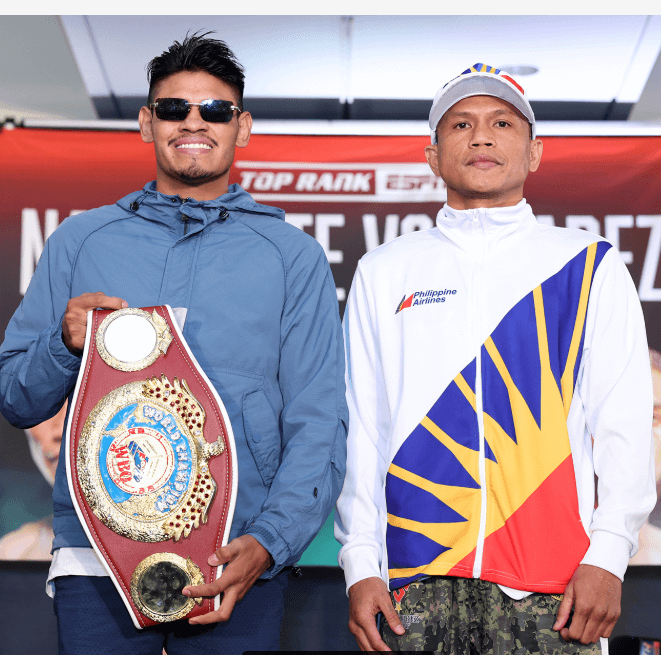
Avila Perspective, Chap. 326: Top Rank and San Diego Smoke
Years ago, I worked at a newsstand in the Beverly Hills area. It was a 24-hour a day version and the people that dropped by were very colorful and unique.
One elderly woman Eva, who bordered on homeless but pridefully wore lipstick, would stop by the newsstand weekly to purchase a pack of menthol cigarettes. On one occasion, she asked if I had ever been to San Diego?
I answered “yes, many times.”
She countered “you need to watch out for San Diego Smoke.”
This Saturday, Top Rank brings its brand of prizefighting to San Diego or what could be called San Diego Smoke. Leading the fight card is Mexico’s Emanuel Navarrete (39-2-1, 32 KOs) defending the WBO super feather title against undefeated Filipino Charly Suarez (18-0, 10 KOs) at Pechanga Arena. ESPN will televise.
This is Navarrete’s fourth defense of the super feather title.
The last time Navarrete stepped in the boxing ring he needed six rounds to dismantle the very capable Oscar Valdez in their rematch. One thing about Mexico City’s Navarrete is he always brings “the smoke.”
Also, on the same card is Fontana, California’s Raymond Muratalla (22-0, 17 KOs) vying for the interim IBF lightweight title against Russia’s Zaur Abdullaev (20-1, 12 KOs) on the co-main event.
Abdullaev has only fought once before in the USA and was handily defeated by Devin Haney back in 2019. But that was six years ago and since then he has knocked off various contenders.
Muratalla is a slick fighting lightweight who trains at the Robert Garcia Boxing Academy now in Moreno Valley, Calif. It’s a virtual boot camp with many of the top fighters on the West Coast available to spar on a daily basis. If you need someone bigger or smaller, stronger or faster someone can match those needs.
When you have that kind of preparation available, it’s tough to beat. Still, you have to fight the fight. You never know what can happen inside the prize ring.
Another fighter to watch is Perla Bazaldua, 19, a young and very talented female fighter out of the Los Angeles area. She is trained by Manny Robles who is building a small army of top female fighters.
Bazaldua (1-0, 1 KO) meets Mona Ward (0-1) in a super flyweight match on the preliminary portion of the Top Rank card. Top Rank does not sign many female fighters so you know that they believe in her talent.
Others on the Top Rank card in San Diego include Giovani Santillan, Andres Cortes, Albert Gonzalez, Sebastian Gonzalez and others.
They all will bring a lot of smoke to San Diego.
Probox TV
A strong card led by Erickson “The Hammer” Lubin (26-2, 18 KOs) facing Ardreal Holmes Jr. (17-0, 6 KOs) in a super welterweight clash between southpaws takes place on Saturday at Silver Spurs Arena in Kissimmee, Florida. PROBOX TV will stream the fight card.
Ardreal has rocketed up the standings and now faces veteran Lubin whose only losses came against world titlists Sebastian Fundora and Jermell Charlo. It’s a great match to decide who deserves a world title fight next.
Another juicy match pits Argentina’s Nazarena Romero (14-0-2) against Mexico’s Mayelli Flores (12-1-1) in a female super bantamweight contest.
Nottingham, England
Anthony Cacace (23-1, 8 KOs) defends the IBO super featherweight title against Leigh Wood (28-3, 17 KOs) in Wood’s hometown on Saturday at Nottingham Arena in Nottingham, England. DAZN will stream the Queensberry Promotions card.
Ireland’s Cacace seems to have the odds against him. But he is no stranger to dancing in the enemy’s lair or on foreign territory. He formerly defeated Josh Warrington in London and Joe Cordina in Riyadh in IBO title defenses.
Lampley at Wild Card
Boxing telecaster Jim Lampley will be signing his new book It Happened! at the Wild Card Boxing gym in Hollywood, Calif. on Saturday, May 10, beginning at 2 p.m. Lampley has been a large part of many of the greatest boxing events in the past 40 years. He and Freddie Roach will be at the signing.
Fights to Watch (All times Pacific Time)
Sat. DAZN 11 a.m. Anthony Cacace (23-1) vs Leigh Wood (28-3).
Sat. PROBOX.tv 3 p.m. Erickson Lubin (26-2) vs Ardreal Holmes Jr. (17-0).
Sat. ESPN 7 p.m. Emanuel Navarrete (39-2-1) vs Charly Suarez (18-0); Raymond Muratalla (22-0) vs Zaur Abdullaev (20-1).
Photo credit: Mikey Williams / Top Rank
To comment on this story in the Fight Forum CLICK HERE
Featured Articles
“Breadman” Edwards: An Unlikely Boxing Coach with a Panoramic View of the Sport
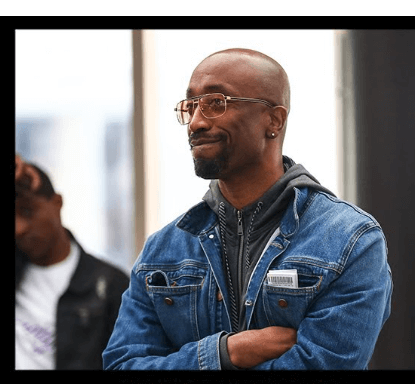
Stephen “Breadman” Edwards’ first fighter won a world title. That may be some sort of record.
It’s true. Edwards had never trained a fighter, amateur or pro, before taking on professional novice Julian “J Rock” Williams. On May 11, 2019, Williams wrested the IBF 154-pound world title from Jarrett Hurd. The bout, a lusty skirmish, was in Fairfax, Virginia, near Hurd’s hometown in Maryland, and the previously undefeated Hurd had the crowd in his corner.
In boxing, Stephen Edwards wears two hats. He has a growing reputation as a boxing coach, a hat he will wear on Saturday, May 31, at Mandalay Bay in Las Vegas when the two fighters that he currently trains, super middleweight Caleb Plant and middleweight Kyrone Davis, display their wares on a show that will air on Amazon Prime Video. Plant, who needs no introduction, figures to have little trouble with his foe in a match conceived as an appetizer to a showdown with Jermall Charlo. Davis, coming off his career-best win, an upset of previously undefeated Elijah Garcia, is in tough against fast-rising Cuban prospect Yoenli Hernandez, a former world amateur champion.
Edwards’ other hat is that of a journalist. His byline appears at “Boxing Scene” in a column where he answers questions from readers.
It’s an eclectic bag of questions that Breadman addresses, ranging from his thoughts on an upcoming fight to his thoughts on one of the legendary prizefighters of olden days. Boxing fans, more so than fans of any other sport, enjoy hashing over fantasy fights between great fighters of different eras. Breadman is very good at this, which isn’t to suggest that his opinions are gospel, merely that he always has something provocative to add to the discourse. Like all good historians, he recognizes that the best history is revisionist history.
“Fighters are constantly mislabled,” he says. “Everyone talks about Joe Louis’s right hand. But if you study him you see that his left hook is every bit as good as his right hand and it’s more sneaky in terms of shock value when it lands.”
Stephen “Breadman” Edwards was born and raised in Philadelphia. His father died when he was three. His maternal grandfather, a Korean War veteran, filled the void. The man was a big boxing fan and the two would watch the fights together on the family television.
Edwards’ nickname dates to his early teen years when he was one of the best basketball players in his neighborhood. The derivation is the 1975 movie “Cornbread, Earl and Me,” starring Laurence Fishburne in his big screen debut. Future NBA All-Star Jamaal Wilkes, fresh out of UCLA, plays Cornbread, a standout high school basketball player who is mistakenly murdered by the police.
Coming out of high school, Breadman had to choose between an academic scholarship at Temple or an athletic scholarship at nearby Lincoln University. He chose the former, intending to major in criminal justice, but didn’t stay in college long. What followed were a succession of jobs including a stint as a city bus driver. To stay fit, he took to working out at the James Shuler Memorial Gym where he sparred with some of the regulars, but he never boxed competitively.
Over the years, Philadelphia has harbored some great boxing coaches. Among those of recent vintage, the names George Benton, Bouie Fisher, Nazeem Richardson, and Bozy Ennis come quickly to mind. Breadman names Richardson and West Coast trainer Virgil Hunter as the men that have influenced him the most.
We are all a product of our times, so it’s no surprise that the best decade of boxing, in Breadman’s estimation, was the 1980s. This was the era of the “Four Kings” with Sugar Ray Leonard arguably standing tallest.
Breadman was a big fan of Leonard and of Leonard’s three-time rival Roberto Duran. “I once purchased a DVD that had all of Roberto Duran’s title defenses on it,” says Edwards. “This was a back before the days of YouTube.”
But Edwards’ interest in the sport goes back much deeper than the 1980s. He recently weighed in on the “Pittsburgh Windmill” Harry Greb whose legend has grown in recent years to the point that some have come to place him above Sugar Ray Robinson on the list of the greatest of all time.
“Greb was a great fighter with a terrific resume, of that there is no doubt,” says Breadman, “but there is no video of him and no one alive ever saw him fight, so where does this train of thought come from?”
Edwards notes that in Harry Greb’s heyday, he wasn’t talked about in the papers as the best pound-for-pound fighter in the sport. The boxing writers were partial to Benny Leonard who drew comparisons to the venerated Joe Gans.
Among active fighters, Breadman reserves his highest praise for Terence Crawford. “Body punching is a lost art,” he once wrote. “[Crawford] is a great body puncher who starts his knockouts with body punches, but those punches are so subtle they are not fully appreciated.”
If the opening line holds up, Crawford will enter the ring as the underdog when he opposes Canelo Alvarez in September. Crawford, who will enter the ring a few weeks shy of his 38th birthday, is actually the older fighter, older than Canelo by almost three full years (it doesn’t seem that way since the Mexican redhead has been in the public eye so much longer), and will theoretically be rusty as 13 months will have elapsed since his most recent fight.
Breadman discounts those variables. “Terence is older,” he says, “but has less wear and tear and never looks rusty after a long layoff.” That Crawford will win he has no doubt, an opinion he tweaked after Canelo’s performance against William Scull: “Canelo’s legs are not the same. Bud may even stop him now.”
Edwards has been with Caleb Plant for Plant’s last three fights. Their first collaboration produced a Knockout of the Year candidate. With one ferocious left hook, Plant sent Anthony Dirrell to dreamland. What followed were a 12-round setback to David Benavidez and a ninth-round stoppage of Trevor McCumby.
Breadman keeps a hectic schedule. From Monday through Friday, he’s at the DLX Gym in Las Vegas coaching Caleb Plant and Kyrone Davis. On weekends, he’s back in Philadelphia, checking in on his investment properties and, of greater importance, watching his kids play sports. His 14-year-old daughter and 12-year-old son are standout all-around athletes.
On those long flights, he has plenty of time to turn on his laptop and stream old fights or perhaps work on his next article. That’s assuming he can stay awake.
To comment on this story in the Fight Forum CLICK HERE
Featured Articles
Arne’s Almanac: The Good, the Bad, and the (Mostly) Ugly; a Weekend Boxing Recap and More
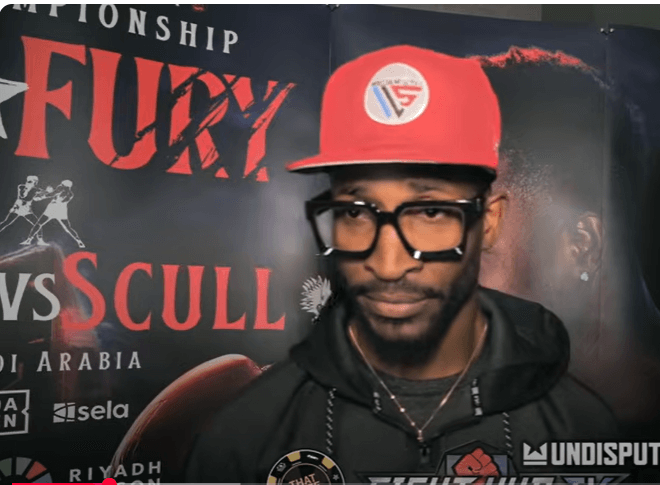
Arne’s Almanac: The Good, the Bad, and the (Mostly) Ugly; a Weekend Boxing Recap and More
It’s old news now, but on back-to-back nights on the first weekend of May, there were three fights that finished in the top six snoozefests ever as measured by punch activity. That’s according to CompuBox which has been around for 40 years.
In Times Square, the boxing match between Devin Haney and Jose Carlos Ramirez had the fifth-fewest number of punches thrown, but the main event, Ryan Garcia vs. Rolly Romero, was even more of a snoozefest, landing in third place on this ignoble list.
Those standings would be revised the next night – knocked down a peg when Canelo Alvarez and William Scull combined to throw a historically low 445 punches in their match in Riyadh, Saudi Arabia, 152 by the victorious Canelo who at least pressed the action, unlike Scull (pictured) whose effort reminded this reporter of “Cat on a Hot Tin Roof” – no, not the movie starring Paul Newman, just the title.
CompuBox numbers, it says here, are best understood as approximations, but no amount of rejiggering can alter the fact that these three fights were stinkers. Making matters worse, these were pay-per-views. If one had bundled the two events, rather than buying each separately, one would have been out $90 bucks.
****
Thankfully, the Sunday card on ESPN from Las Vegas was redemptive. It was just what the sport needed at this moment – entertaining fights to expunge some of the bad odor. In the main go, Naoya Inoue showed why he trails only Shohei Ohtani as the most revered athlete in Japan.
Throughout history, the baby-faced assassin has been a boxing promoter’s dream. It’s no coincidence that down through the ages the most common nickname for a fighter – and by an overwhelming margin — is “Kid.”
And that partly explains Naoya Inoue’s charisma. The guy is 32 years old, but here in America he could pass for 17.
Joey Archer
Joey Archer, who passed away last week at age 87 in Rensselaer, New York, was one of the last links to an era of boxing identified with the nationally televised Friday Night Fights at Madison Square Garden.
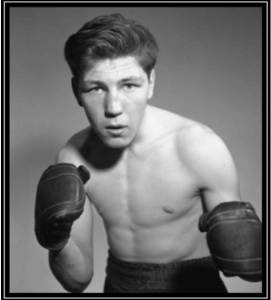
Joey Archer
Archer made his debut as an MSG headliner on Feb. 4, 1961, and had 12 more fights at the iconic mid-Manhattan sock palace over the next six years. The final two were world title fights with defending middleweight champion Emile Griffith.
Archer etched his name in the history books in November of 1965 in Pittsburgh where he won a comfortable 10-round decision over Sugar Ray Robinson, sending the greatest fighter of all time into retirement. (At age 45, Robinson was then far past his peak.)
Born and raised in the Bronx, Joey Archer was a cutie; a clever counter-puncher recognized for his defense and ultimately for his granite chin. His style was embedded in his DNA and reinforced by his mentors.
Early in his career, Archer was domiciled in Houston where he was handled by veteran trainer Bill Gore who was then working with world lightweight champion Joe Brown. Gore would ride into the Hall of Fame on the coattails of his most famous fighter, “Will-o’-the Wisp” Willie Pep. If Joey Archer had any thoughts of becoming a banger, Bill Gore would have disabused him of that notion.
In all honesty, Archer’s style would have been box office poison if he had been black. It helped immensely that he was a native New Yorker of Irish stock, albeit the Irish angle didn’t have as much pull as it had several decades earlier. But that observation may not be fair to Archer who was bypassed twice for world title fights after upsetting Hurricane Carter and Dick Tiger.
When he finally caught up with Emile Griffith, the former hat maker wasn’t quite the fighter he had been a few years earlier but Griffith, a two-time Fighter of the Year by The Ring magazine and the BWAA and a future first ballot Hall of Famer, was still a hard nut to crack.
Archer went 30 rounds with Griffith, losing two relatively tight decisions and then, although not quite 30 years old, called it quits. He finished 45-4 with 8 KOs and was reportedly never knocked down, yet alone stopped, while answering the bell for 365 rounds. In retirement, he ran two popular taverns with his older brother Jimmy Archer, a former boxer who was Joey’s trainer and manager late in Joey’s career.
May he rest in peace.
To comment on this story in the Fight Forum CLICK HERE
-
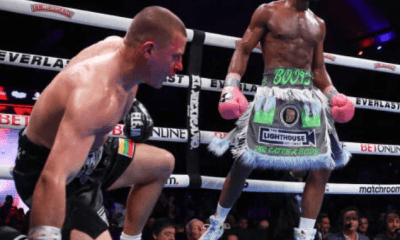
 Featured Articles4 weeks ago
Featured Articles4 weeks agoJaron ‘Boots’ Ennis Wins Welterweight Showdown in Atlantic City
-

 Featured Articles4 weeks ago
Featured Articles4 weeks agoBoxing Notes and Nuggets from Thomas Hauser
-
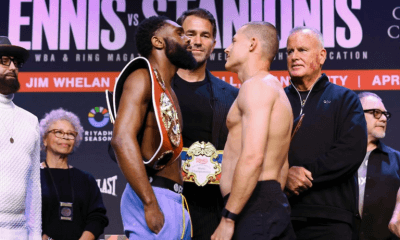
 Featured Articles4 weeks ago
Featured Articles4 weeks agoAvila Perspective Chap 320: Boots Ennis and Stanionis
-
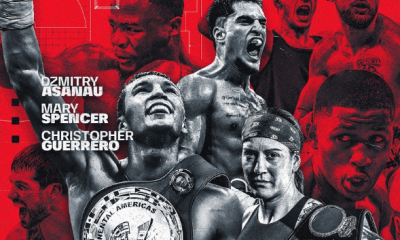
 Featured Articles4 weeks ago
Featured Articles4 weeks agoDzmitry Asanau Flummoxes Francesco Patera on a Ho-Hum Card in Montreal
-
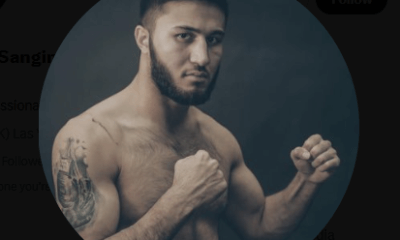
 Featured Articles3 weeks ago
Featured Articles3 weeks agoMekhrubon Sanginov, whose Heroism Nearly Proved Fatal, Returns on Saturday
-
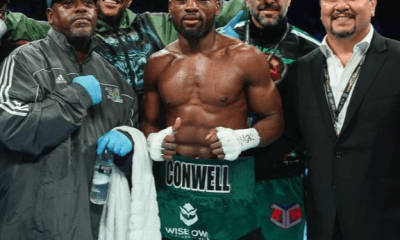
 Featured Articles3 weeks ago
Featured Articles3 weeks agoAvila Perspective, Chap. 322: Super Welterweight Week in SoCal
-
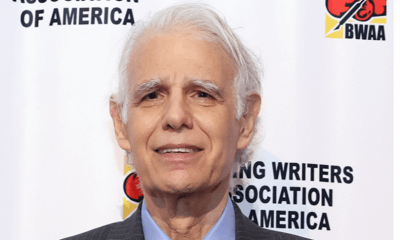
 Featured Articles3 weeks ago
Featured Articles3 weeks agoTSS Salutes Thomas Hauser and his Bernie Award Cohorts
-
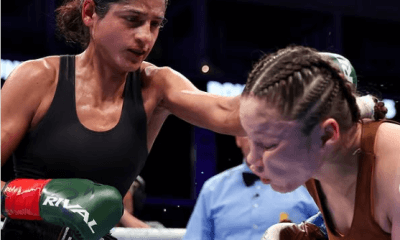
 Featured Articles3 weeks ago
Featured Articles3 weeks agoGabriela Fundora KOs Marilyn Badillo and Perez Upsets Conwell in Oceanside















